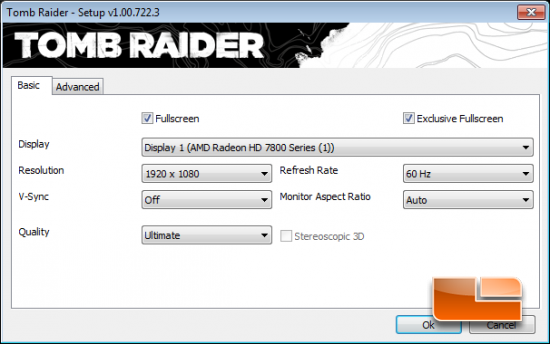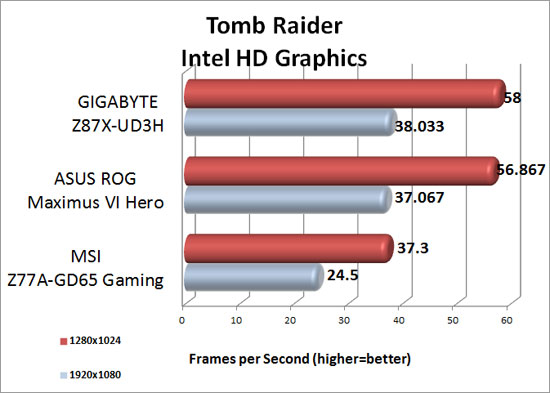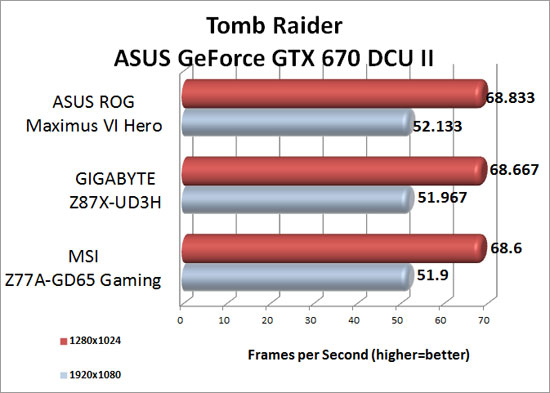ASUS Republic Of Gamers Maximus VI Hero Intel Z87 Motherboard Review
Tomb Raider

On March 5th, 2013 Square Enix released Tomb Raider, billed as a reboot of the franchise. In Tomb Raider, the player is confronted with a much younger Lara Croft who is shipwrecked and finds herself stranded on a mysterious island rife with danger, both natural and human. In contrast to the earlier games Croft is portrayed as vulnerable, acting out of necessity, desperation and sheer survival rather than for a greater cause or personal gain.

The game has been built on Crystal Dynamics’s game engine called the “Crystal Engine” and the graphics look fantastic. AMD and Crystal Dyanmic’s worked on a new technology called TressFX Hair, which AMD describes as “the world’s first in-game implementation of a real-time, per-strand hair physics system” for this game title. We set the image quality to ultimate for benchmarking, but we disabled TressFX Hair under the advanced tab to be fair to NVIDIA graphics cards that don’t support the feature.
Tomb Raider – Intel HD Graphics

Benchmark Results: Not surprisingly the ASUS Maximus VI Hero was significantly faster than the MSI Z77A-GD65 Gaming with the Intel HD 4000 Graphics. At 1280×1024 the Hero was able to average 56.867 frames per second, just shy of 20 frames per second, or 52.5% faster than the HD 4000 graphics! Increasing the resolution to 1920×1080 the Maximus VI Hero with the Intel HD Graphics 4600 was able to average 37.067 frames per second, 13.5 frames per second or 51.3% faster than the Intel Z77 system.
Tomb Raider – ASUS NVIDIA GeForce GTX 670 DirectCU II

Benchmark Results: Once again we don’t see much of a difference in performance when running the ASUS GeForce GTX 670 DirectCU II. The ASUS Maximus VI Hero was able to average 68.833 frames per second at 1280×1024 and 52.133 frames per second at 1920×1080.

Comments are closed.